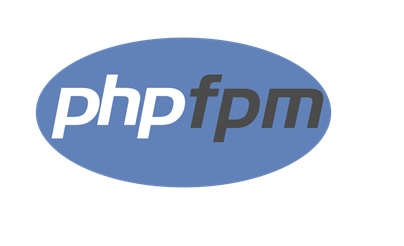Programming Tips October 16, 2024
Difference between PHP-CGI and PHP-FPM

PHP-CGI and PHP-FPM are both methods used to process PHP scripts on web servers, but they operate in different ways and are suited to different scenarios. Here’s a breakdown of the key differences between PHP-CGI and PHP-FPM:
1. Definition
- PHP-CGI (Common Gateway Interface):
- PHP-CGI is the standard way to run PHP scripts by creating a new process for each request. It acts as a middleman between the web server and PHP, meaning the server passes the request to PHP-CGI, which interprets the PHP script and sends the output back to the server.
- PHP-FPM (FastCGI Process Manager):
- PHP-FPM is an advanced version of the FastCGI protocol designed to manage PHP processes more efficiently. It allows PHP to handle multiple requests using worker processes, making it faster and more scalable for high-traffic websites. PHP-FPM is widely used in combination with Nginx and Apache.
2. Performance
- PHP-CGI:
- Each request spawns a new PHP process, which leads to high overhead. It performs well for low-traffic websites but becomes inefficient when handling multiple requests concurrently.
- PHP-FPM:
- PHP-FPM keeps a pool of worker processes running, reusing them for multiple requests. This significantly reduces overhead and improves performance, especially for high-traffic websites. It’s faster than PHP-CGI because it doesn’t need to create and destroy a new process for every request.
3. Resource Management
- PHP-CGI:
- Limited in resource management. Since each request gets its own PHP process, memory usage can spike under heavy load. It doesn’t handle concurrent connections efficiently, leading to poor scalability.
- PHP-FPM:
- Has advanced resource management capabilities. PHP-FPM allows you to configure how processes are handled, including how many processes to start, how many to keep idle, and how to manage queues. This ensures more efficient resource allocation and can handle traffic spikes more effectively.
4. Process Management
- PHP-CGI:
- It has no built-in process manager. The web server needs to invoke PHP-CGI for every request, which means PHP-CGI does not manage processes or queues, leading to inefficiency under load.
- PHP-FPM:
- Includes a built-in process manager that can dynamically control the number of PHP processes. PHP-FPM allows you to configure options like "dynamic" and "ondemand" to better manage processes based on demand.
5. Configuration and Flexibility
- PHP-CGI:
- Simpler but less flexible. It lacks fine-grained control over how PHP processes are handled. There are fewer customization options for managing heavy loads or optimizing for performance.
- PHP-FPM:
- More configurable and flexible. It provides settings for adjusting the number of processes, timeout durations, logging, and error handling, making it much more suitable for high-performance websites.
6. Compatibility with Web Servers
- PHP-CGI:
- Can be used with various web servers like Apache, Nginx, and others. It works well with Apache’s
mod_cgiandmod_actions, but is less efficient with Nginx due to lack of process persistence.
- Can be used with various web servers like Apache, Nginx, and others. It works well with Apache’s
- PHP-FPM:
- Often paired with Nginx, but also works with Apache using
mod_proxy_fcgi. Nginx does not natively support PHP and relies heavily on PHP-FPM for processing PHP requests.
- Often paired with Nginx, but also works with Apache using
7. Error Handling and Logging
- PHP-CGI:
- Basic error handling and logging capabilities. It can log errors for individual requests, but since processes are short-lived, managing logs can be cumbersome under heavy load.
- PHP-FPM:
- More advanced error handling and logging features. It provides better logging for slow requests and allows for easy debugging. It also supports advanced features like
slowlog, which records slow requests for later analysis.
- More advanced error handling and logging features. It provides better logging for slow requests and allows for easy debugging. It also supports advanced features like
8. Use Cases
- PHP-CGI:
- Suitable for small, low-traffic websites where the overhead of creating a new process for each request is not a major concern.
- PHP-FPM:
- Ideal for high-traffic websites or applications requiring high performance, such as e-commerce sites, large blogs, or web applications.
Summary of Key Differences:
| Feature | PHP-CGI | PHP-FPM |
|---|---|---|
| Protocol | Common Gateway Interface (CGI) | FastCGI Process Manager (FPM) |
| Performance | Slower (new process per request) | Faster (process pooling) |
| Resource Management | Limited | Advanced (dynamic process control) |
| Process Management | No process manager | Built-in process manager |
| Flexibility | Limited configuration | Highly configurable |
| Compatibility | Works with most web servers | Typically used with Nginx and Apache |
| Best for | Low-traffic websites | High-traffic, high-performance sites |
In short, PHP-FPM is generally preferred for modern, high-performance environments, while PHP-CGI is simpler but more resource-intensive, and is best suited for smaller or simpler projects
Sharing is sexy
Latest article
- Troubleshooting Guide: Resolving cURL Error 60 (SSL Certificate Problem) During Auth0 Callback
- Exploring the Sacred Arupadai Veedu: The Mythical Journey of Lord Murugan's Six Abodes
- The Start and Spread of Coronavirus: A Timeline
- Challenges in the Transition to Renewable Energy and The Future
- Types of Renewable Energy Sources and Role in Combating Climate Change
